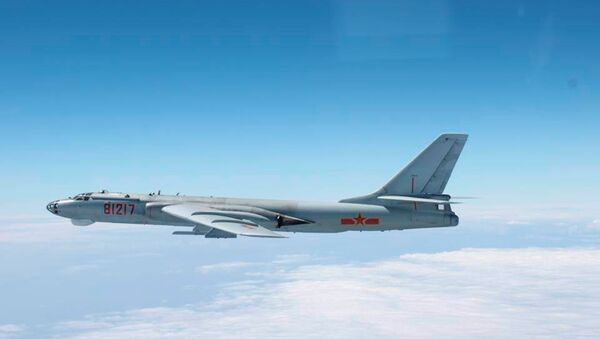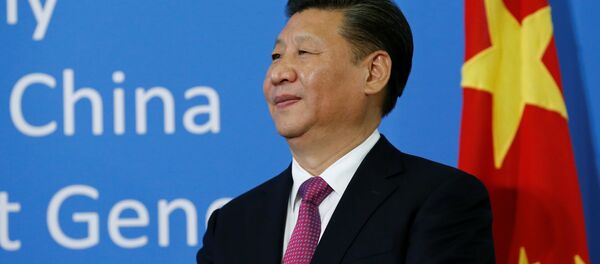The PLAAF aircraft group consisted of two nuclear-capable H-6 strategic bombers, two J-11 fighter planes, and one Tu-154 spy plane, according to South Korea's Joint Chiefs of Staff.
A group of F-15K fighters were marshalled to monitor the activity after the PLAAF aircraft entered KADIZ Monday morning, the Korea Times reports. The F-15Ks "identified the types of Chinese military aircraft" that were present and "took normal tactical measures until the Chinese planes left," a Joint Chiefs of Staff official told the news outlet.
Beijing reportedly communicated with the South Korean military via a hotline to inform Seoul that the PLAAF aircraft were conducting routine training operations and did not intend to enter South Korea's airspace, the South Korean military official noted.
"We contacted the Chinese side through our hotline and they said they had been conducting regular exercises," the defense official told reporters, adding, "We are still in the process of analyzing the Chinese military's exact intentions."
The location of Chinese warplanes alarming the South Korean air force is an area where Japanese, South Korean and Chinese ADIZs overlap, according to local reports.
"It appears that China's goal was to reconfirm its ADIZ and conduct reconnaissance of Japan," Park Byung-kwang, a researcher at the Institute for National Security Strategy in Seoul, told Korea Joongang daily.
Since South Korean President Moon Jae-in and Chinese President Xi Jinping recently held a five-hour summit last Thursday, "it doesn't seem like China held the drills targeting [South] Korea," the researcher said.
Moon and Xi apparently "completely overcame the awkwardness" regarding the Terminal High Altitude Area Defense (THAAD) missile batteries installed by the US in South Korea, a source close to Moon told the Yonhap News Agency. "Even though the THAAD issue isn't resolved completely, the frequency and intensity with which China raised the issue became markedly lower," the aide said Sunday.




